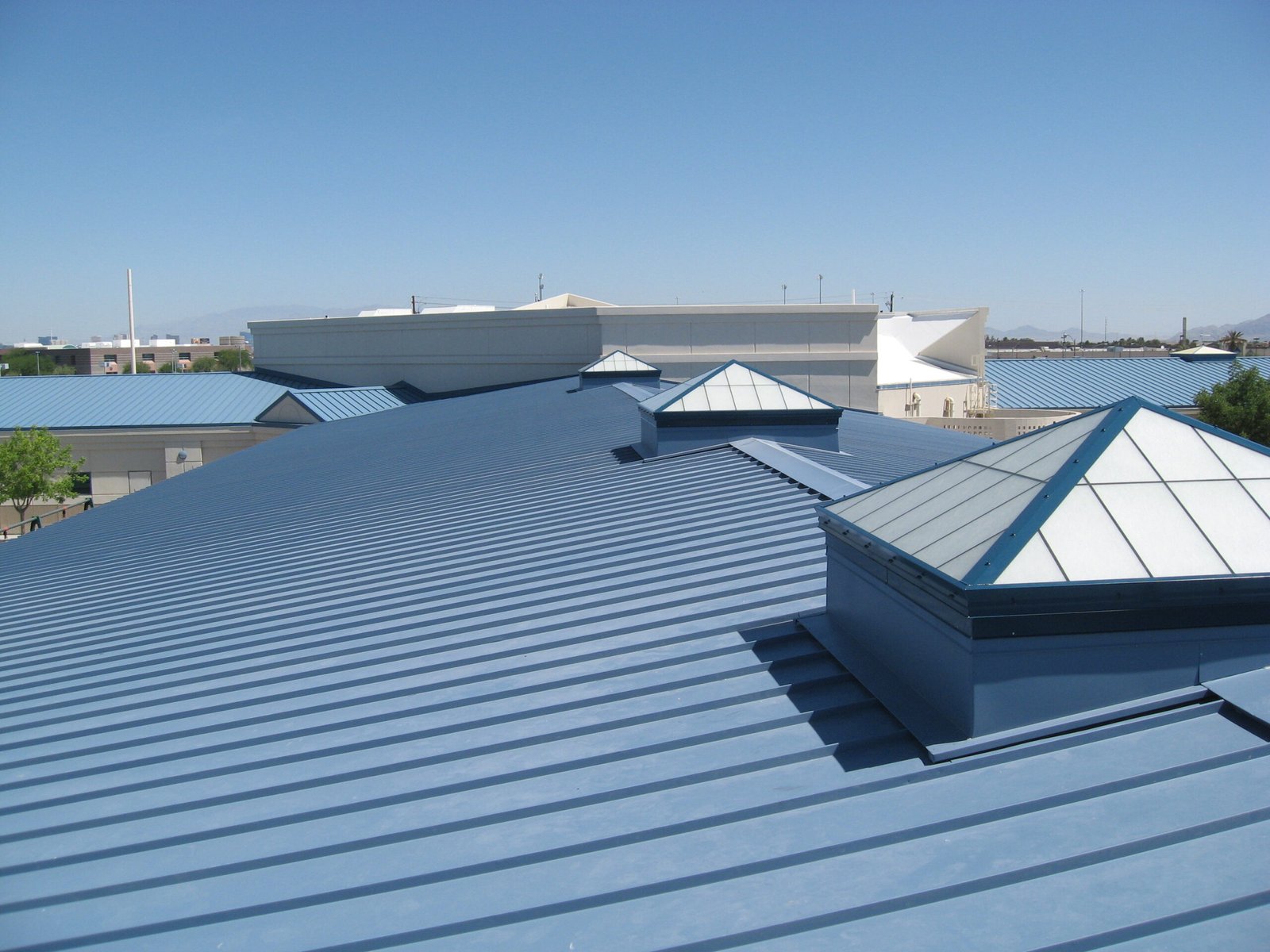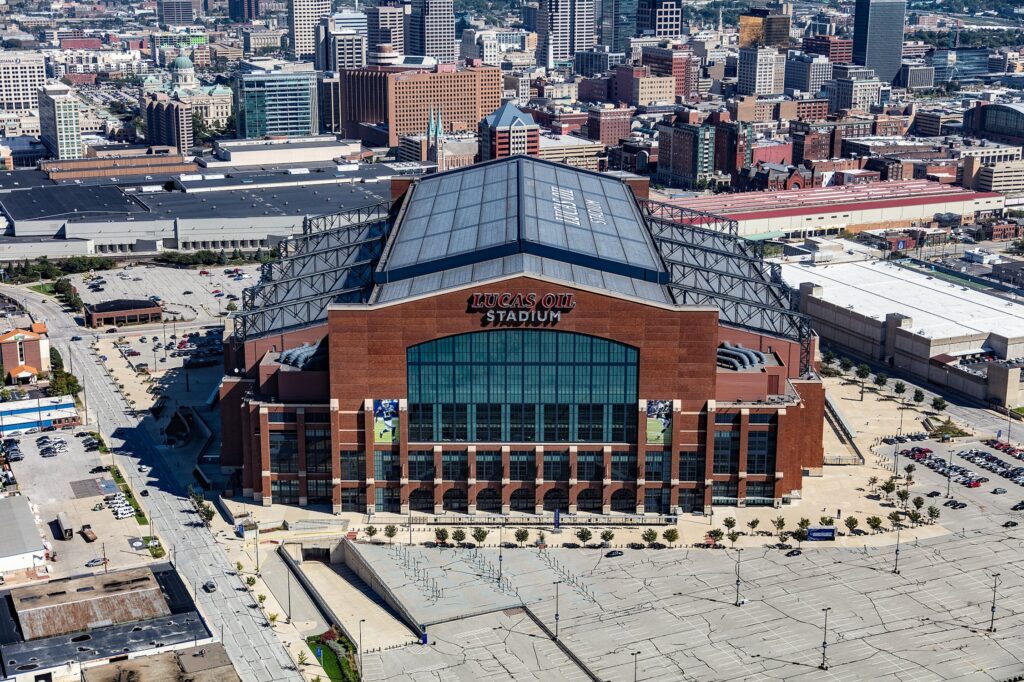Your commercial building is a reliable shield that keeps your business safe from the unpredictable forces of nature. One of the most crucial parts of this defense is your roof. Just like a trustworthy umbrella shields you from rain, your commercial roof guards your property against the weather’s harsh blows.
From rain and snow to blazing sun and strong winds, your roof takes the brunt of it all. That’s why understanding how to protect it from weather damage is essential. In this guide, we’ll walk you through simple steps to keep your commercial roof standing solid and sturdy.
Hire Professional Commercial Roofing Contractors to Install the Roof
Hiring professional commercial roofing contractors is wise when protecting your commercial property from weather-related damage. Commercial roofs are crucial investments in safeguarding your business and assets. Here are some reasons why hiring professionals for commercial roofing installation is essential:
- Expertise and experience: Professional commercial roofing contractors have the necessary expertise and experience to install various types of commercial roofing systems correctly. They understand the nuances of roofing materials, techniques, and local building codes.
- Quality installation: Improper installation can lead to leaks, structural damage, and other issues that might not be immediately apparent. Professional contractors ensure that the roof is installed correctly, minimizing the risk of future problems.
- Safety: Roof installation can be dangerous work, especially on commercial buildings. Professional contractors are trained in safety protocols and have the appropriate equipment to work safely at heights.
- Customization: Professionals can recommend the best roofing solution for your specific needs. They consider building size, location, weather conditions, and budget to provide a tailored roofing solution.
- Code compliance: Commercial roofing contractors know local building codes and regulations. They ensure that the roofing installation adheres to these standards, preventing potential legal and financial issues down the line. All works related to commercial spaces require permits, like wall coverings, painting, or trimming, to name a few. Professionals can handle all such permits and help you get them seamlessly.
- Proper tools and equipment: Installing a commercial roof requires specialized tools. Professional contractors come prepared with the right resources to do the job efficiently and effectively.
You must conduct ample research to find the right commercial roofing contractors. Look for contractors with a strong reputation, experience in commercial roofing, and positive customer reviews.
You can look for terms like “commercial roofing companies near me” to get a list of service providers in your locality. Once you find the potential service providers, get a quote from them to ensure the project stays within your budget. You can then interview the shortlisted businesses or contractors and hire one that suits your needs.
Understanding Weather-Related Roof Damage

Rain, snow, wind, and sunlight can all affect your commercial property’s roof. Think about it this way: when rain pours down, your roof becomes a waterproof cape, ensuring no water leaks. But sometimes, if there are cracks or weak spots, rainwater can find its way inside, causing trouble.
Now, imagine snow piling up on your roof. It’s heavy, just like a pile of books. If there’s too much snow and your roof isn’t strong enough, it might feel like the weight is too much to bear. This can lead to damage and even parts of your roof giving in under the pressure.
This can expose your employees to harsh weather conditions, which can even be fatal. According to the information shared by the U.S. Bureau of Labor Statistics, there were 22 deaths from ice, sleet, or snow in workplaces in the U.S. in 2022.
The wind is another player in this weather game. Imagine a strong wind as a big, invisible hand trying to lift your roof. The wind can pry things loose and create openings if your roof isn’t firmly attached or sealed correctly. This can allow water or other debris to get inside.
And let’s not forget the sun; it’s like a bright spotlight but can also be pretty harsh. Like how the sun can fade your clothes over time, it can weaken your roof materials and age faster. It’s like the sun giving your roof a sunburn, making it less sturdy.
In this context, installing cool roofs can lead to a 33.8% savings in cooling energy demand. According to CDS Roofing Systems, properly maintained commercial roofing can improve your workplace’s energy efficiency. The type of material you choose for roofing can also play a vital role in influencing the amount of energy saved. Hence, it is best to consult a professional commercial roofing service provider to pick the suitable material for your needs.
Each of these weather elements does its kind of damage. Rain can leak in, snow can weigh down, wind can pry up, and the sun can wear out. It’s like your roof is a superhero, fighting off different villains. But just like superheroes need rest and care, your roof needs attention, too, to stay strong and keep your building safe.
Regular Inspection and Maintenance
Every once in a while, it’s a good idea to look at your roof. Walk around and see if any missing shingles or parts look a bit out of place. If you spot any cracks, gaps, or things that just don’t look right, it’s a sign that your roof might need some fixing.
It’s not just about what you see on the outside. Sometimes, water can sneak into places you can’t easily see. That’s why it’s a good idea to peek into your attic or the space just below your roof. If you notice any damp spots, it could mean water is getting in somehow. And remember, water where it shouldn’t be is like a red flag telling you that something’s not right.
Remember, just like you keep your car in good shape with oil changes and tire checks, your roof needs a little care, too. Regular inspections and fixes might feel like a small task, but they can save you from big troubles. Your roof works hard to protect you, so giving it some attention now and then is smart.
Proper Drainage and Gutter Systems
Gutters are like the channels that run along the edges of your roof, collecting rainwater. They help direct the water to a safe spot away from your building. Commercial gutters are more significant than residential ones, so 7- or 8-inch box gutters are common in this genre.
But it’s not just about collecting water. It’s about making sure it goes away, too. Gutters are like the exit signs for rainwater. They guide it toward downspouts, which are like the slides at a playground. These slides help the water flow to the ground, away from your roof and walls.
If these gutters and downspouts get clogged, it’s like putting a significant roadblock on the slide. The rainwater can’t go down, so it pools in the gutters instead. This is like a mini swimming pool on your roof, which you don’t want.
Pooling water can seep into your roof, causing leaks and water damage. It’s like having a leaky ceiling indoors but happening on your roof. By keeping your gutters clean and free-flowing, you’re helping your roof stay dry and robust.
Reinforcing Against Wind and Hail
You know those windy days when you feel like you might get blown away? Strong winds can similarly affect your roof, especially if it’s not well-prepared.
To ensure your roof doesn’t take off like a kite, you can reinforce it. Think of it as adding extra support to those puzzle pieces. Roofing experts use techniques to secure the parts tightly so that even strong winds can’t mess with them.
Hail is another weather beast that can be tough on roofs. Imagine hailstones as tiny, icy cannonballs falling from the sky. They can cause dents, cracks, or even break things when they hit your roof. It’s like your roof is getting a barrage of icy attacks. This can also prevent property damage. Europe and North America together faced around $300 billion in damage over the last decade due to hazards like hail, wind, and tornadoes.
Reinforcing against hail involves using materials that can handle the impact. It’s like wearing a helmet to protect your head. Roofing pros know which materials are strong enough to endure hail without getting damaged. They make sure your roof can take the hits without falling apart.
Conclusion
Safeguarding your commercial roof from the rigors of weather damage is essential for your workplace’s longevity and structural integrity. Proactive measures exhibit the practicality of addressing both immediate concerns and long-term preservation.
Additionally, the prudent management of snow load and a well-devised emergency preparedness strategy demonstrates the conscientious handling of unexpected challenges.






